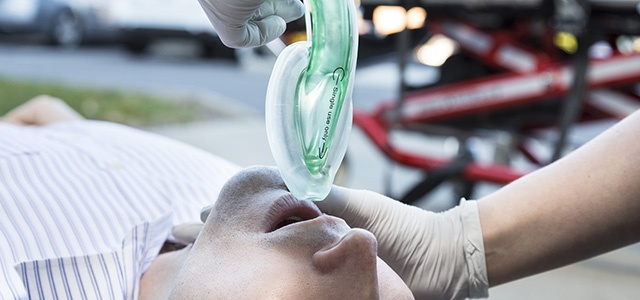
CPR on cadavers to evaluate supraglottic airway devices on negative intrathoracic pressures
The evaluation of supraglottic airway devices which may develop negative intrathoracic pressures took to a prospective cross-over study of cardiopulmonary resuscitation in human cadavers.
Dr Joe Holley, Department of Emergency Medicine, University of Tennessee, Memphis (USA), with the collaboration of Johanna C. Moore, Michael Jacobs, Carolina Rojas-Salvador, Charles Lick, Bayert J. Salverdab, Michael C. Lickb, Ralph J. Frascone, Scott T. Youngquist, Keith G. Lurie published a paper on the Official Journal of the European Resuscitation Council related to the negative intrathoracic pressures (ITP) during the decompression CPR caused by the use of supraglottic airway devices.
Practically, negative intrathoracic pressure during CPR is essential to refill the heart, increase cardiac output, maintain cerebral and coronary perfusion pressures, and improve survival rate. In order to generate negative ITP, an airway seal is necessary.
The team led by Dr Joe Holley tested the hypothesis that some supraglottic airway devices (SGA) do not seal the airway as well the standard endotracheal tube (ETT).
According to the abstract, the methods which have been carried out airway pressures (AP) were measured as a surrogate for ITP in seven recently deceased human cadavers of varying body habitus. Conventional manual, automated, and active compression-decompression CPR were performed with and without an impedance threshold device (ITD) in supine and Head-Up positions.
Positive pressure ventilation was delivered by an ETT and 5 SGA devices tested in a randomized order in this prospective cross-over designed study. The primary outcome was comparisons of decompression AP between all groups.
In order to generate significantly lower negative ITP during the decompression phase of all methods of CPR, an ITD was required. SGAs varied in their ability to support negative ITP.
In a human cadaver model, the ability to generate negative intrathoracic pressures varied with different SGAs and an ITD regardless of the body position or CPR method. In conclusion, differences in SGAs devices should be strongly considered when trying to optimize cardiac arrest outcomes, as some SGAs do not consistently develop a seal or negative intrathoracic pressure with multiple different CPR methods and devices.
YOU MAY WISH TO READ ALSO:
Train with a mannequin which vomits green slime!
Airway Management Guidelines could change quickly
Pediatric Airway Obstruction Manoeuvre in Case of Vomit or Liquids: Yes or No?





